If you’d asked me to characterise a typical Georgian wine before I visited the country I’d have probably said that a Georgian white has the body of a red, is gold, comes out of a clay pot in the ground, tastes like marmalade and sake and has dry, sometimes bitter tannins; a Georgian red is a powerhouse of fruit, black in colour, as muscular as a Georgian wrestler, comes out of a clay pot in the ground, tastes like a cross between Malbec and pomegranate and has massive, mouth-filling tannins.
And you can’t spell the grape varieties for toffee.
Which, after my first week in the country, I realise would have got me a fail in a WSET exam.
True, the traditional form of winemaking using a qvevri (buried clay vessel), that traces its lineage back to 6000 years before Christ, is very much alive and well in Georgia but the resulting wines only constitute 5% of wines produced here. The great majority of Georgian wines are more commercial, made with wood and steel vessels and aimed at a mainstream audience, albeit one that likes its wines expressive with oodles of character.
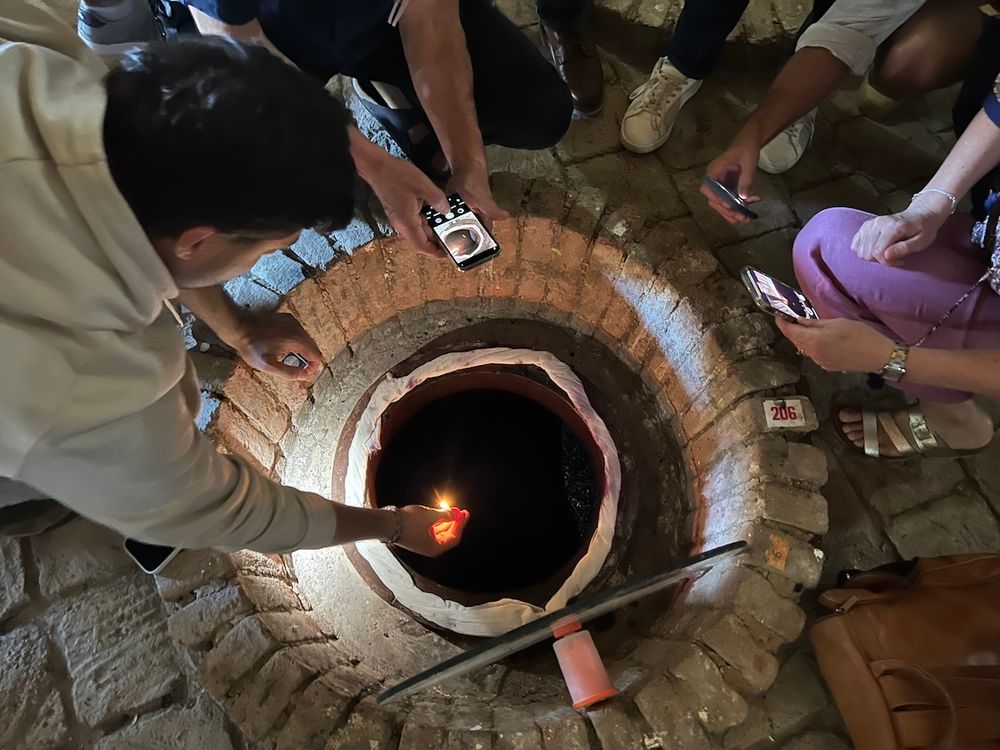
Old school: checking whether a qvevri wine has stopped fermenting. If the match extinguishes there's still too much CO2 so the wine is not ready.
As the 40 or so wineries we met during a one-week stint in the country were keen to point out, Georgia is still in a transitional phase of its evolution. Domestic and international investment, young blood in the vineyards and wineries, 30 years of independence… all of this has led to an invigorating fusion of wine styles with traditionalists trying out new things and start-ups using old.
It’s ironic though, given its Cradle of Wine status, but it felt to this first-time visitor that Georgia is an emerging wine country, still trying to find its feet, rather than the oldest source of winemaking on the planet.

"Younger winemakers are benefitting from our mistakes.” John Wurderman from Pheasant's Tears
Learning lessons and adapting styles
The fact of the matter is that the style of Georgian wine is changing, and fast – both traditional qvevri wines and more internationally-focused wines – dictated by commercial needs and a rising tide of new, young winemakers. On the one hand there’s a move towards ‘precision qvevri’ winemaking and, on the other, a conscious movement towards more mainstream styles, using an increasingly large array of grape varieties with export in mind.
In the ten years since Ottolenghi first championed Georgian wines in the UK – wines that arguably placed ideology before consistent quality – winemakers here have smartened up their act.
“It’s true a lot of heavy-handed tannic wines went to the market too early,” admits influential natural winemaker and restaurateur John Wurdeman, “but Georgian wine is getting better and better – younger winemakers are benefitting from our mistakes.”
Winemakers are increasingly making wines less dry in style and with less abrasive tannins, making them more approachable to a wider, more mainstream audience.

“A lot of people think Georgian wine is natural and there are others who think it should be made to the same standards as New Zealand.” Robert Joseph
Cashflow also dictates that winemakers often cannot age qvevri wines for as long as they need to for the tannins to integrate so the winemaking is having to adapt – virtually no winemakers we visited are using stems anymore, to avoid bitterness, the wines are increasingly spending less time on skins whether fermented in steel or qvevri (often for two months rather than the six to eight that used to be the norm) and qvevris are being used as just one of the vinification vessels rather than the sole one.
Such is the speed of change that a Symposium being held next year is focused on debating ‘What is a qvevri wine?’.
“It’s going to look at the confusion of the consumer,” says Robert Joseph, a UK wine consultant who has just finished making his first two Georgian wines, “looking at some wines that are in there for a short time where the qvevri only acts like a steel vessel, compared to ones that are in there for a long period and develop full qvevri characteristics.”

Papari Valley has broken out of the PDO system to make its first multi-region wine
Increasing diversity through innovation
Freedom to travel since independence and subsequent exposure to a broader range of international wine styles are also factors driving these stylistic changes.
“The fondness, that relationship between Georgian wine and young Georgians is changing, young people are travelling and discovering other wines so they don ‘t have the same relationship with (traditional) Georgian wine,” Wurderman says.
The innovation and experimentation was plain to see at most of the wineries we visited:
Winemakers are starting to use more of the 525 grape varieties indigenous to the country rather than just Saperavi and Rhksitelli (the two main varieties planted by the Soviets). Goruli Mtsvane and Shavkapito, in particular shone through.
There are also a number of winemakers starting to make rosé, a category that has never taken off in Georgia but on evidence showed fascinating gastronomic potential.
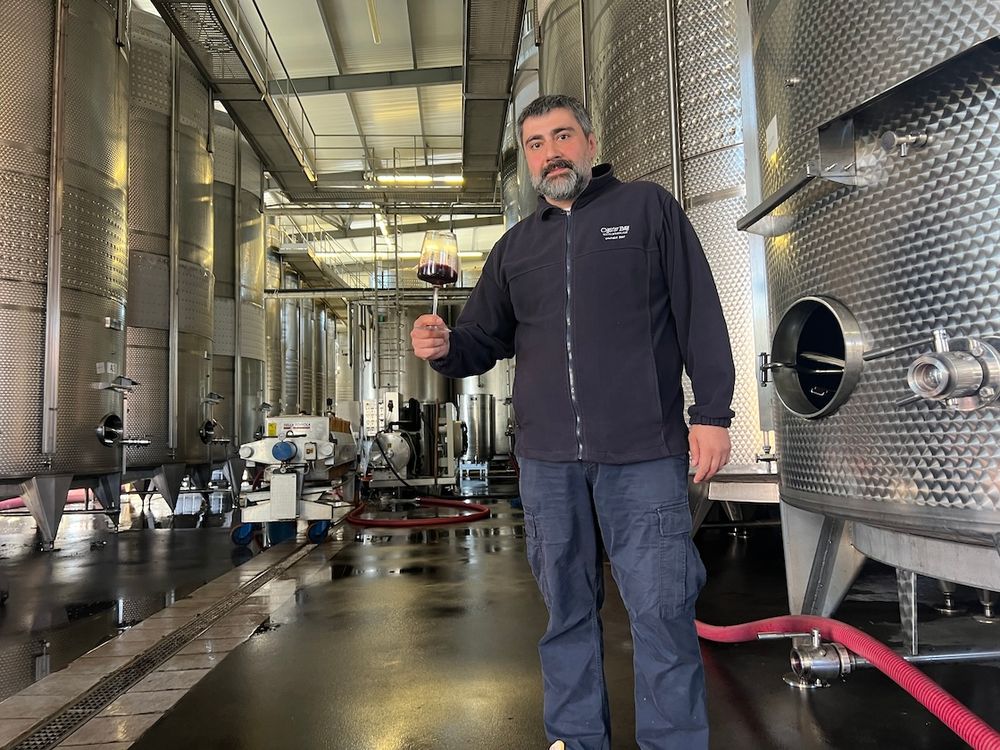
Winery Shilda - combining centuries-long traditions with innovative new technologies
Multi-variety blends and now multi-vintage blends are increasing. Joseph's K’Avshiri wines, for example, which he is making in conjunction with Vladimer Kublashvili, are breaking new ground by being multi-vintage and featuring a fascinating mix of grape varieties, maybe not as many as the 117-variety field blend that Wurdeman uses to make his Polyphonia wine, but an exhilirating blend nevertheless. K’Avshiri white is a blend of eight Georgian varieties with the addition of Muscat and Aligoté, while the red wine blends nine different Georgian varieties, including two white, and the rare Aladasturi whose grapes were dried for 10 days before fermentation.
Papari Valley, a small family-run winery in Khaketi has just launched Chinuri-Rkatsiteli 2022, its first multi-region wine, Sandro Kurdadze explaining that they don’t recognise the PDO system “because they were devised by the Soviets and don’t make sense. They are the opposite of the French system where you have winemakers and then devise a PDO around them. Our ones were invented to show where you can grow semi-sweet wines.”

Andria Marianashvili in the massive underground storage Winery Chelti has built to age its wines in
Another family-run winery in the same region, Winery Chelti, has invested heavily in storage so that it can keep its qvevri wines for a number of years, releasing aged wines under a Heritage label.
And then there are winemakers like Marani Casreli who just has a long line of experimental demi-johns in his modest boutique winery. “We play a lot,” he laughed before presenting us with a range of wines that were outstanding in their craft and authenticity.
There’s also a breath of fresh air in the look and feel of many Georgian wines too.

New look label for Pheasant's Tears
Wurderman’s Pheasant’s Tears wines have broken with the past by no longer using ‘old’ Byzantine-style labels but opting now for pop art designs with a generically-branded, Helvetica-led back label. Was it my imagination but was this excellent range tasting a little slicker and more approachable? Certainly they look more in tune with a younger demographic, the like of which attends events such as Tbilisi’s annual natural wine fair Zero Compromise, which now attracts similar attendances to London’s Real Wine Fair. (An impressive 300 registered winemakers (10% of Georgia’s 3,000) consider themselves to be making natural wine now, up from 4 when Wurderman first started making wine in 2007.)

Rezi Tsetskhladze bringing a radical new approach to branding Georgian wine
Even more radical and eye-catching is Pery (Georgian for ‘colour’) a start-up that was set up as a wine brand by Rezi Tsetskhladze who did a masters in wine marketing after his oenology training. Using bought-in grapes Pery started life as a university project to make a different style of amber wine.

Now Tsetskhladze produces four easy drinking wines, colour coded white, rosé, amber and red, that cleverly relate to the wine’s colour, consumer moods and the four seasons. Simple, effective, contemporary and successful, sales have grown from 600 to 20,000 in two years and I’ll warrant will go way beyond that once export deals are put in place.
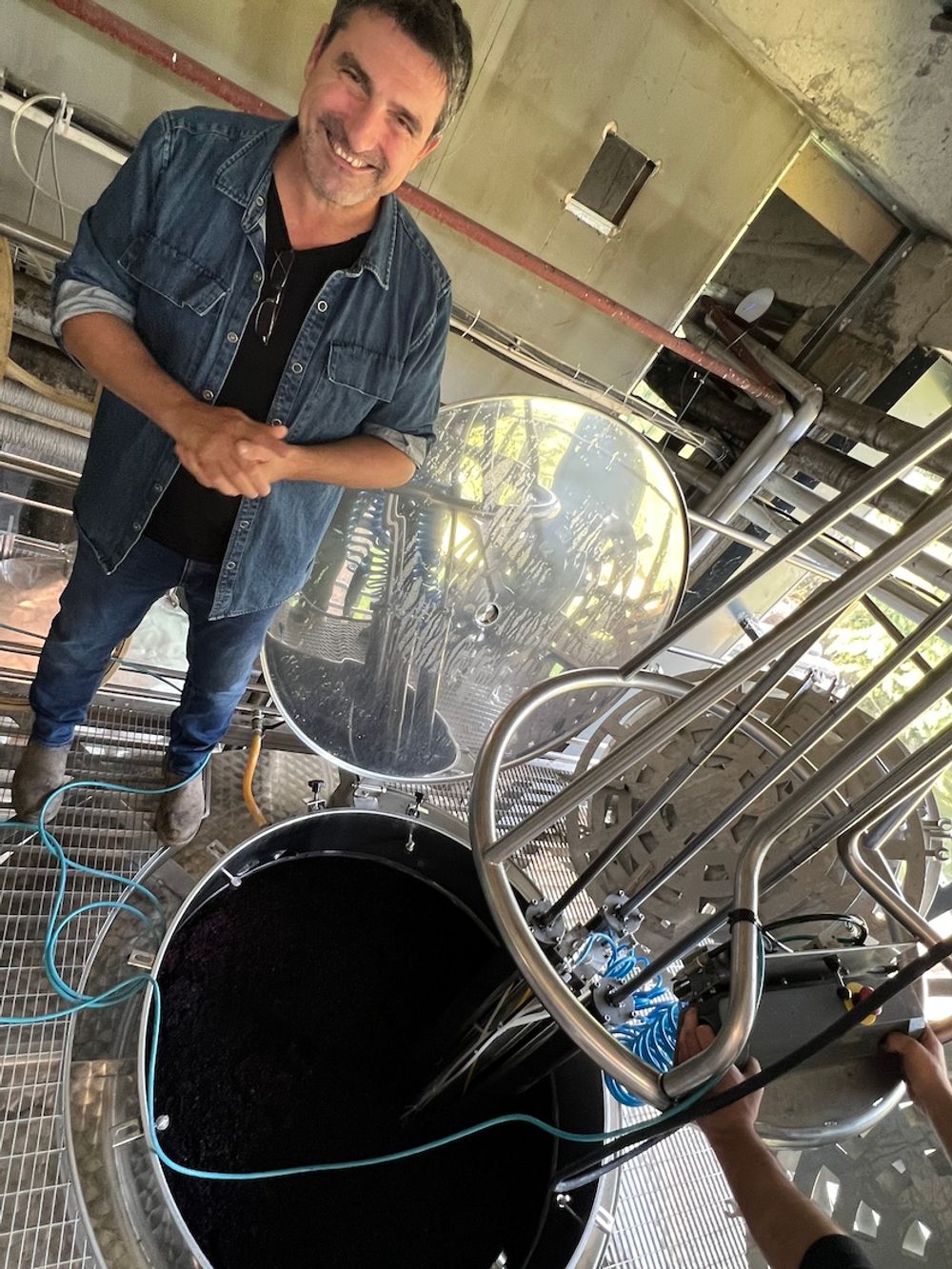
"These wines need to be authentic." Chateau Mukhrani's Patrick Honnef
What is a Georgian wine?
In a country with over 525 different grape varieties, diverse soils and topography, and this surge of differing techniques and styles, the onus will very much be on winemakers here to not lose sight of their viticultural identity.
For Patrick Honnef, a Bordeaux-trained German presiding over the winemaking at Chateau Mukhrani, this is one of the key issues facing the country.
“These wines need to talk about Georgia they have to be authentic. If I use artificial yeast I will get to taste mango and papaya but you can do that anywhere… in Georgia you have to make authentic wines with balance and which find that ‘vibration’.”

The amphora room at Chateau Mukhrani - the cellars also house steel tanks, concrete eggs, qvevri, and small and large format oak barrels
Just 35km from capital Tbilisi (ie. not in Georgia’s viticultural epicentre of Khaketi), Mukhrani traces one of Georgia’s oldest lineages in winemaking, back to 1876 when owner Ivan Mukhranbatoni returned from Bordeaux and Champagne inspired by what he had learned there. He started producing sparkling wine that was actually labelled as Champagne and planted Cabernet Sauvignon. Although Chardonnay and Cabernet Sauvignon are still grown here the focus is very much on indigenous varieties, and not just that but lesser-known varieties to boot.
“What are we standing for here in Georgia?” Honnef asks rhetorically “Goruli Mtsvane and Shavkapito, these are the wines we are developing – in Khaketi there are just so many Saperavis.”

These two varieties were standouts from a large range presented to us which Georgian wine expert Sarah Abbott MW praised overall for showing vast improvements in since her last tasting here. For Honnef this focus is as much about responding to unexpected changes in key export markets as it is in finding a USP in an expanding market.
“I thought we could never sell Shavkapito (a Pinot Noir-like red) in China but now we do, and I thought we could never sell qvevri wines in Russia or China but we do – their palates are developing,” explains Honnef.
“Historically we have been suffering on one side because Georgia has been propagated as a natural wine country. Five years ago, for example, it was very big in Japan. But when I went there I saw lots of long faces “This is not what I tasted in Georgia”… they were saying, but those wines are alive do not be surprised.”
With a vast array of grape varieties and vinification vessels, Mukhrani is a medium to large scale operator making wines that will appeal to a mainstream audience.
“It’s best to show that Georgia has arrived not only as the Cradle of Wine and love of qvevri but that we are able to play with the fine wines of the world,” he says.
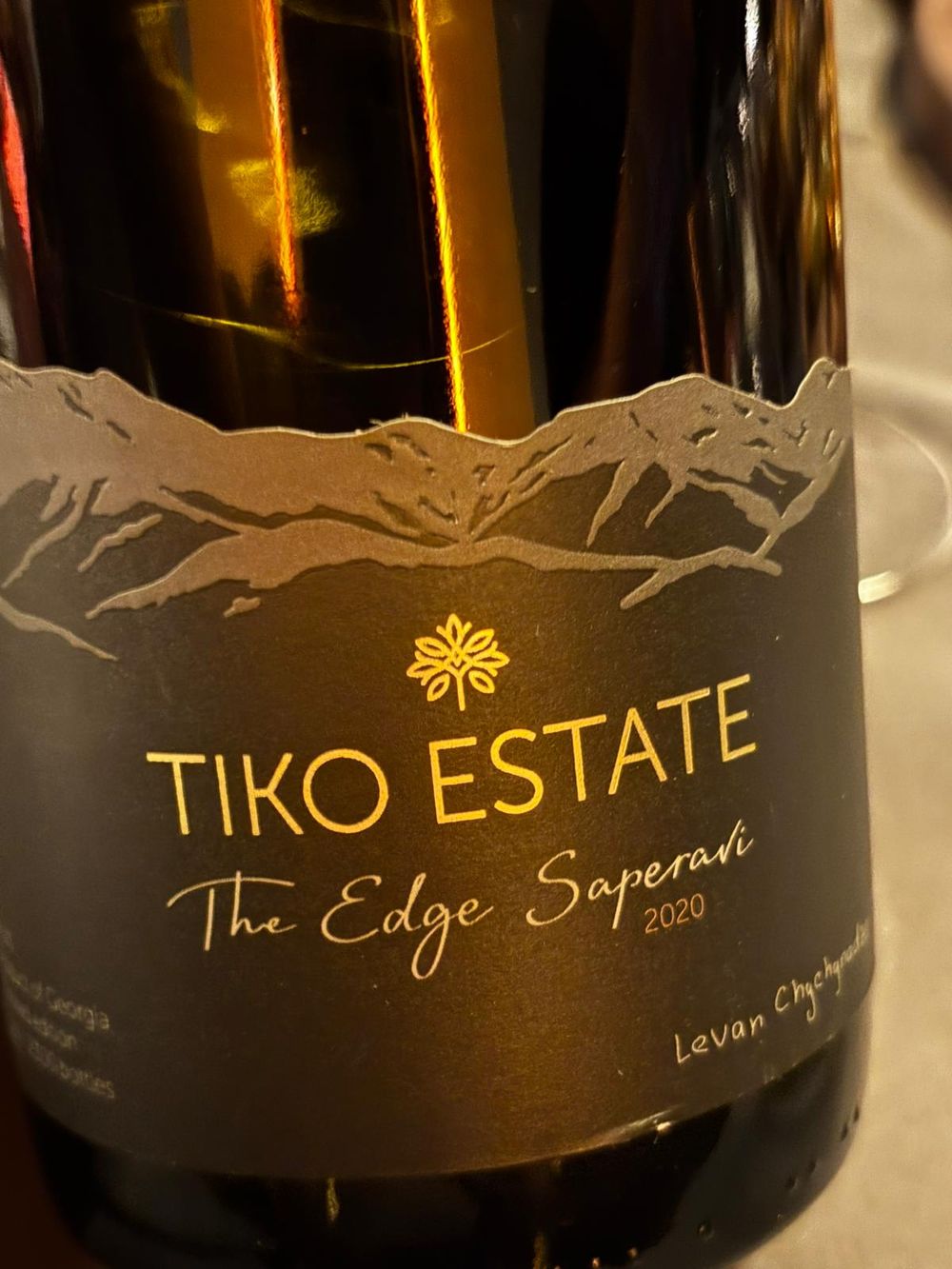
Tiko Estate aligns itself with New Zealand
This dichotomy between styles was also summed up by Robert Joseph on the last night of the trip at a tasting of wines made by Tiko Estate (that looked for all the world like New Zealand’s Te Koko) and natural wines made by Lagvinari whose owner Doctor Eko Glonti is unequivocal about the ideology driving his output.
“In Georgia if you say someone is 'making' wine, we understand it as 'falsifying' wine,” he says adding that wine is ‘born’ not ‘made’ in womb-like qvevris.
“So what is Georgian wine?” asks Joseph, “a lot of people think Georgian wine is natural and there are others who think it should be made to the same standards as New Zealand.”
From the wines presented during the trip the middle ground between these two perameters is the area that is most changing and arguably most promising for commercial growth in export markets.
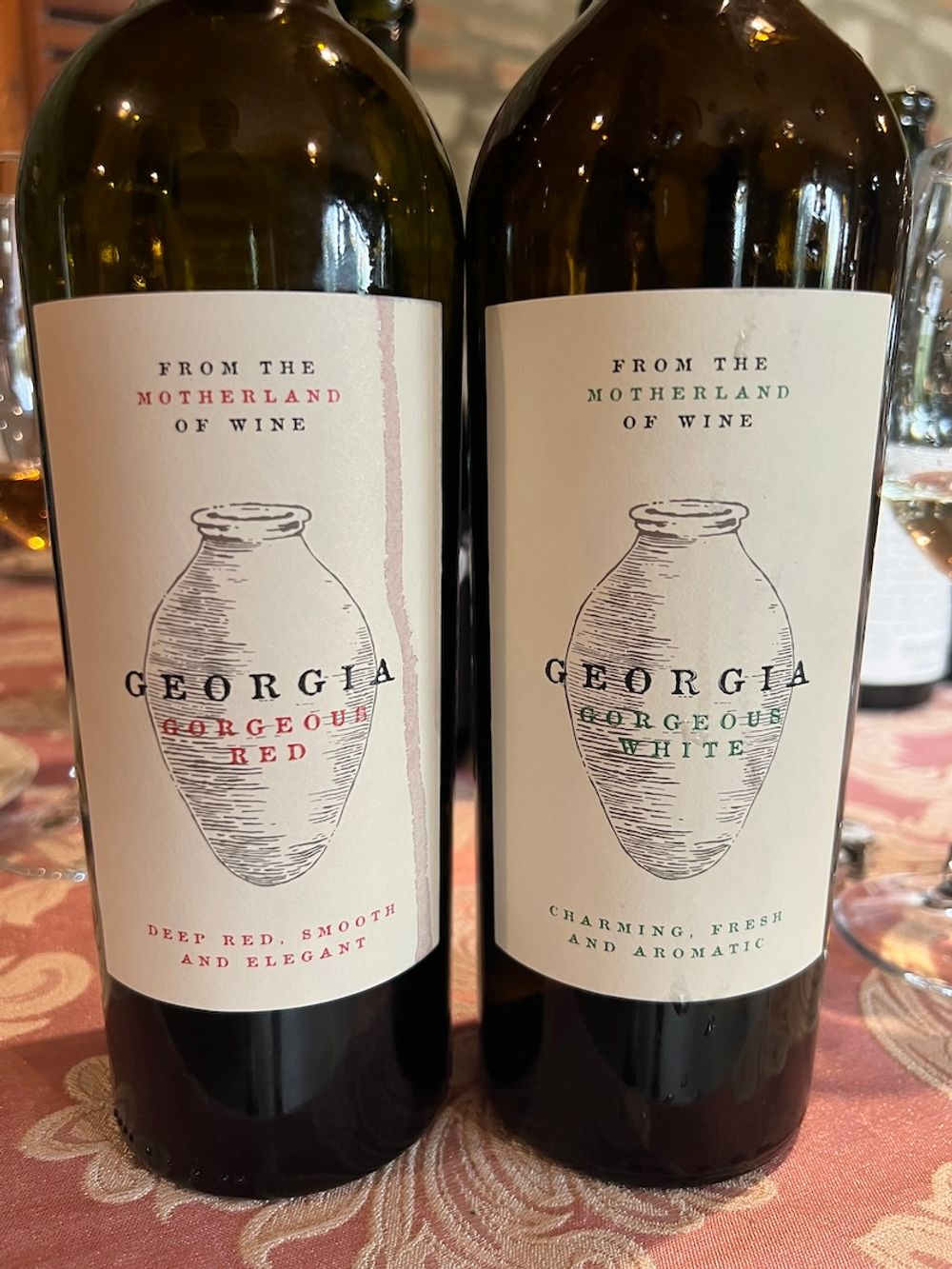
The move into FMCG
One of the last wines tasted at the tail end of this week-long visit could turn out to play a significant part in the profile of Georgian wine in the UK. Two wines, both with the unashamedly populist moniker Georgia Gorgeous White and Gorgeous Red, were by no means great wines compared with the many tasted at an array of producers but, given that they are made for Waitrose and will be the first white label wines for a dedicated British supermarket, this achievement is yet another feather in the cap of national trade body Georgian Wine and its UK-based marketing/ PR team, Swirl Wine Group.
Georgian wine in British supermarkets is currently noticeable by its absence, a situation that could change if Gorgeous Georgia takes off.
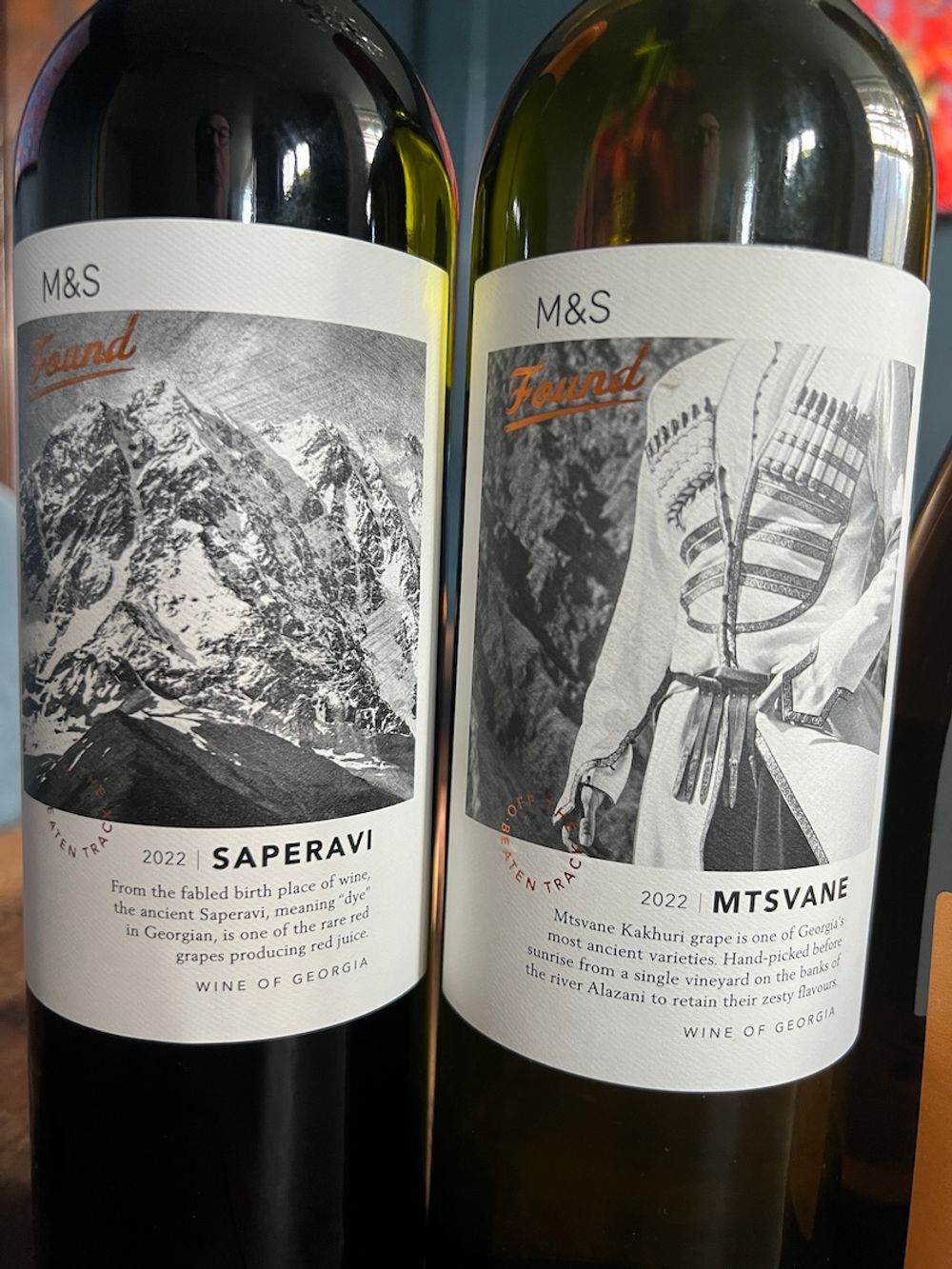
Currently general store M&S stocks three Georgian wines in the UK, a Mtsvane and a Saperavi on its Found label and a qvevri-made Rkatsiteli, all made and bottled by one of the ‘big five’ wine producers Tbilvino.
Cat Lomax, a consultant who has worked with M&S believes it is Saperavi that has greatest potential here, but only if the tannins are tamed and the style made to feel familiar to UK consumers.
“In terms of the overall style, Saperavi is a really rich, ripe and juicy variety with a load of character and that’s exactly what consumers are looking for. The more successful wines are where the tannins have been reined in and are not too dominant. Offering consumers something (from Saperavi) which is stylistically similar (to Malbec) but a little bit different, feels like a great next step.”
It is no coincidence then that Lidl's 'toe in the water' is also with a Saperavi which it is launching into the UK at the end of this month for a retail price of £7.99.
Teliani Valley which produces the Waitrose Wines is the closest we saw to a Torres model in Georgia – a 14m bottle production per annum, a wide portfolio, and commendable investment into a sub-brand it operates called Wine People, a project that finds a route to market for obscure grape varieties made by ‘one-man-band’ outfits – giving ‘a halo’ to its corporate scale and sales to Russia – 60% of its wines are still exported there.
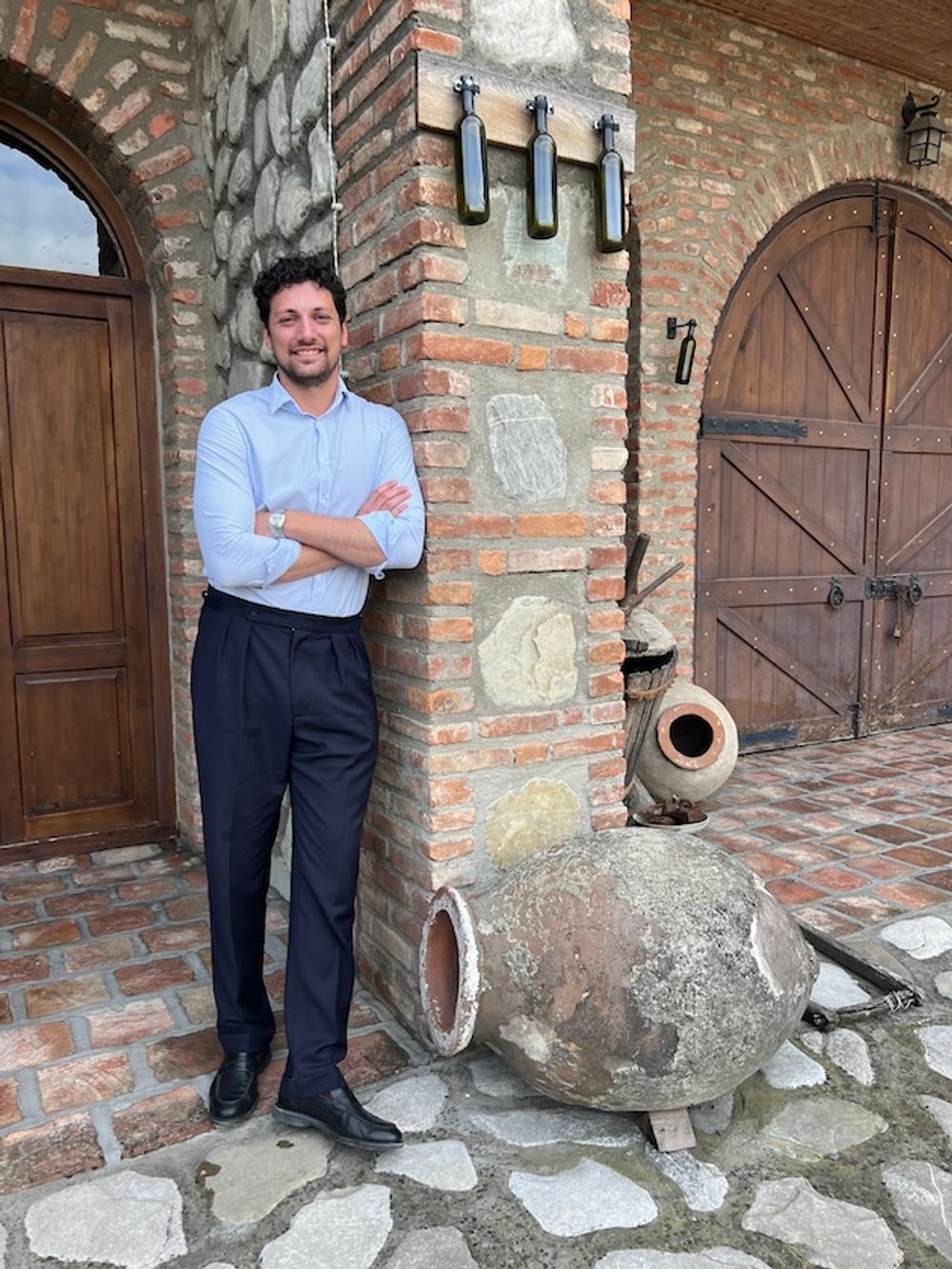
Teliani Valley - a giant investing in worthy, loss leader projects like Wine People
Teliani Valley is a good example of where Georgia is and is headed, it makes out-and-out commercial wines where, even though the grape varieties might not be familiar to non-Georgian palates, its big-selling Saperavi and Rhksitelli are made in appealling, ‘reined-in’ styles and will engender familiarity and loyalty in much the same way as, say, Romania’s Cramele Recas has done with its Wine Atlas label to introduce ‘obscure’ grape varieties such as Feteasca Regala into the UK.
Of course not everyone agrees that using a supermarket wine to lead the Georgian charge is a good thing.
John Wurdeman says “Nobody needs a supermarket wine from Georgia… why play in that market with the likes of Chile?”
But growth in the UK needs to come from somewhere especially if Georgia is to elevate itself into the position of a key wine producing country – Miquel Hudin, author of Georgia: A Guide to the Cradle of Wine believes Georgia could be seen as ‘the new Spain’ if it exports wines that seem ‘more familiar’ to consumers.
Although the UK is not in the top ten of Georgia’s export markets (currently 12th) it is a strategic market with exports both in volume and value rising steadily over the past three years. Figures for the first seven months of 2024 show this trend continuing with volume and value tracking at a growth rate of 16% – the strategic export markets showing the largest growth (in order) being Turkey, USA, Germany, UK, Ukraine and Russia.
Confusingly the statistics from the National Wine Agency do not track the proportion of Georgian wine that is imported into the UK via European hubs in Germany and Benelux – Liberty ships its Georgian wine Bedoba from stock held in Germany as do Novel Wines with wines from Chelti Winery – so its figures show the UK market declining from 2022, which is not the case, as an NWA-commissioned IWSR report shows.
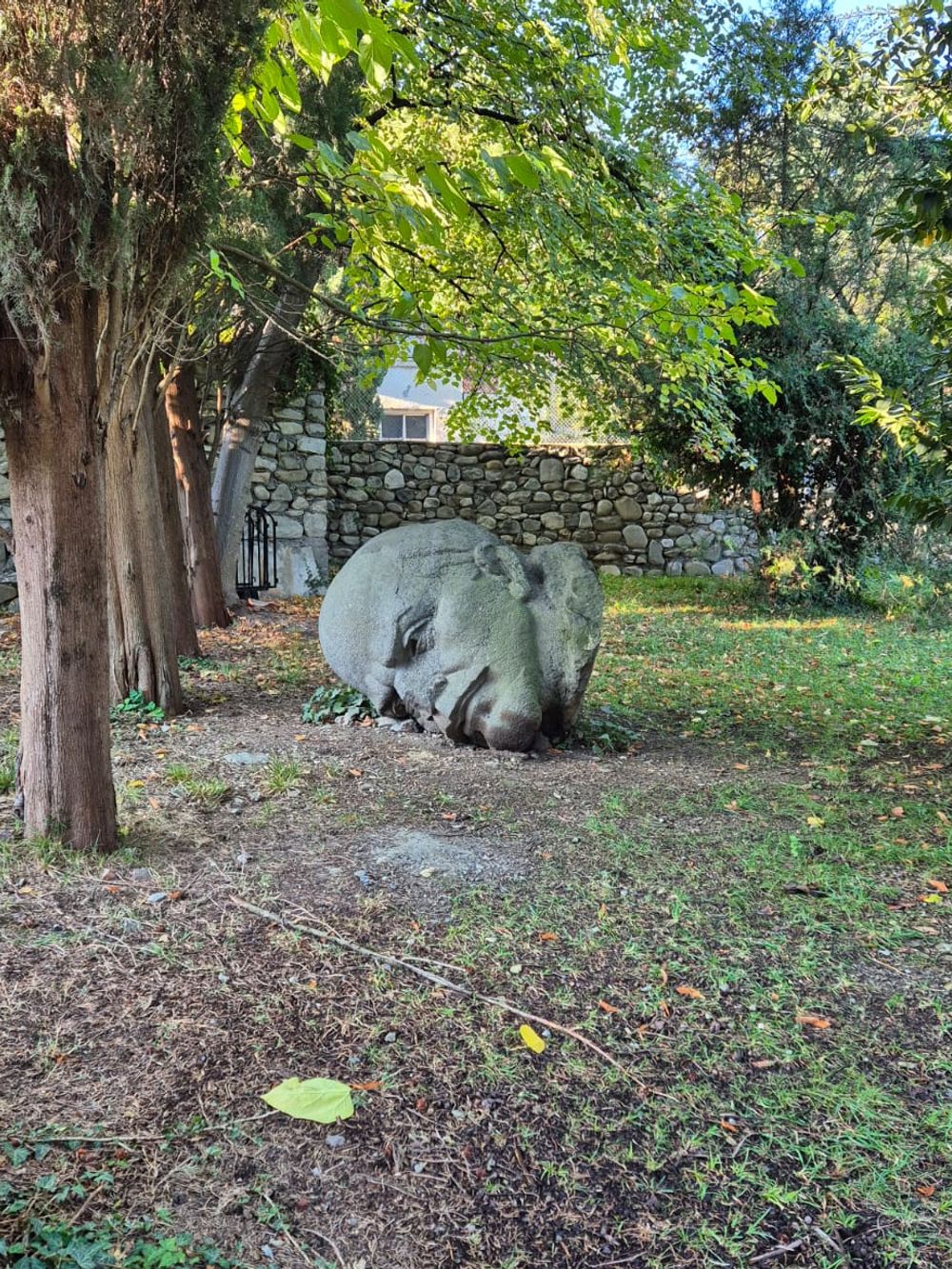
Evidence of the Soviet Union's recent occupation lies everywhere
Russia – the elephant in the room
Georgia’s location and importance of exports make it particularly vulnerable to political and economic crises – wine exports to Ukraine (Georgia’s second largest wine importer), for example, fell to almost zero in the second quarter of 2022. And no appreciation of the current status of Georgian wine would be complete without understanding a little of the impact the Soviet Union and modern-day Russia has had and, as the country prepares for election day in a week’s time, what it may look like moving forwards.
In a nutshell, when the USSR occupied Georgia for most of the Twentieth Century it planted just Saperavi and Rhksitelli vines in high concentration on the valley floors of Khaketi. No family could own more than a hectare of land and factory-style wineries pumped out largely sweet red wines for the Russian market with quantity the main driver at the expense of quality.

Poster encouraging Russians not to drink Georgian wine
Georgian wine has endured a number of key crises since. Between 1985 and 1988 Gorbachev’s dry law hit Georgia restricting production, supply and sale of alcohol, with historic cellars such as Chateau Mukhrani, for example, filled in with rubble, an act of vandalism it took four years to rectify. This law resulted in Georgia losing 40,000 hectares of vineyards. Since gaining independence from the Soviet Union in 1991 Georgia has had to undergo a number of wars with Russia and invasions. As part of a wide-ranging and damaging trade embargo, from March 2007 through early 2013 Russia completely banned the import of Georgian wine.
But it was this Russian ban on Georgian wine imports that proved to be the catalyst for Georgian wine’s long-term growth - helping the industry modernise, diversify, premiumise and seek out key export markets.
After gaining independence Georgia had already started the slow process of overturning the damage that Soveit agriculture had wreaked – uprooting vines, replanting in smaller concentration to obtain lower yields, rebalancing soil health and reclaiming slopes. Winemaking families starting buying back their land, hectare by hectare, and reintroducing qvevris and other key pillars of its wine culture.
With the trade embargo, the Georgian wine industry started taking giant strides in upping the quality of its wines with the amount of wine exports doubling.

Some of the many winemaker awards won by Casreli Winery
Despite diversification, however, Russia is still by far and away Georgia’s largest export market, accounting for 65% of the 89.5m litres of the wine it exported in 2023, and explaining why almost half of Georgian wine exports are still made up of sweet and semi-sweet red wines, the style favoured by Russians.
And exports to Russia are increasing – in the first seven months of 2024 exports to Russia are increasing in volume and value terms by 22% no doubt spurred on by sanctions imposed by other key winemaking regions who are not trading with Russia. (CIS (including Ukraine) accounts for 13% of exports, the EU 12% and 10% US, China and others.)
These export sales figures equate roughly with the export figures of the larger wineries we visited. The smaller, family-owned estates have taken a stance – not selling to Russia out of principle.
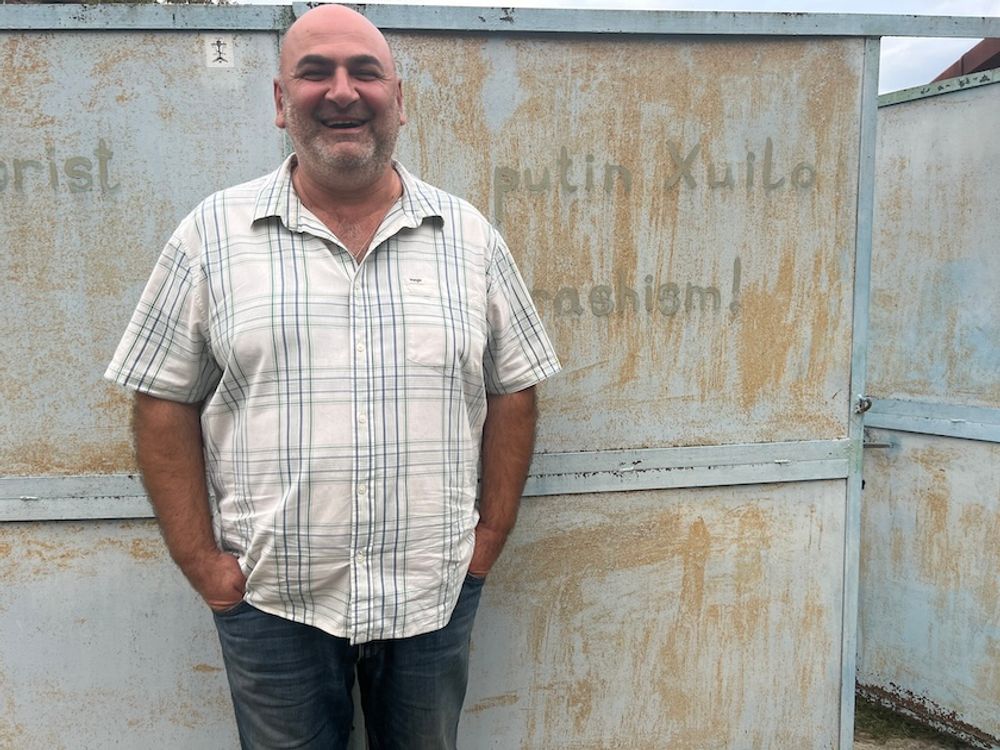
'Putin. Dickhead' - Marani Casreli at the entrance to his winery
“Putin. Dickhead” is written on the entrance to Marani Casreli’s winery along with “Russia is a Terrorist State”. Papari Valley has three flags flying above its premises – one bearing its own equine logo, the Georgian flag and that of Ukraine.
Georgia’s relationship with Russia on a macro level will become more apparent next Monday (October 26th) when the country goes to the polls, the country clearly divided over where its loyalties are best directed.
However the predicted political turmoil of the coming weeks manifests itself, it is clear that Georgian wine and the figures we met during our brief week-long stay that have driven its resurrection, have the power and the wherewithal to continue its brilliant progress no matter what the hurdles are.
A marketing cliché, perhaps, but there has never been a better time to try a Georgian wine.
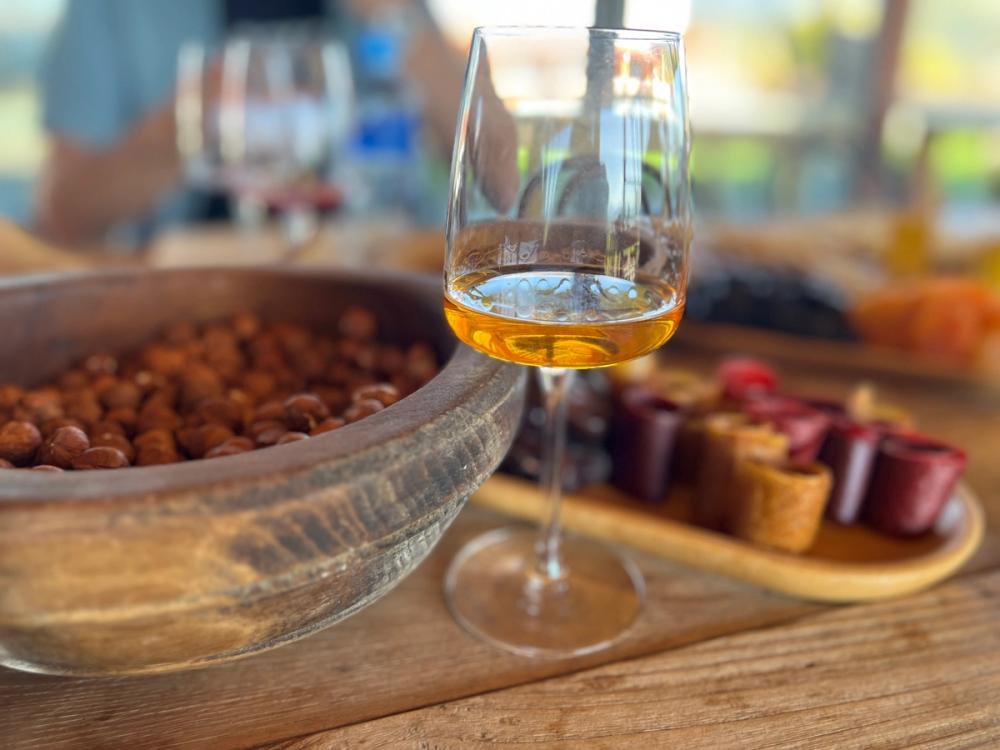
For more information about Georgian wine go to the official website of the national wine agency Georgian Wine or contact Sarah Abbott MW or Madeleine Waters at Swirl Wine Group.
































